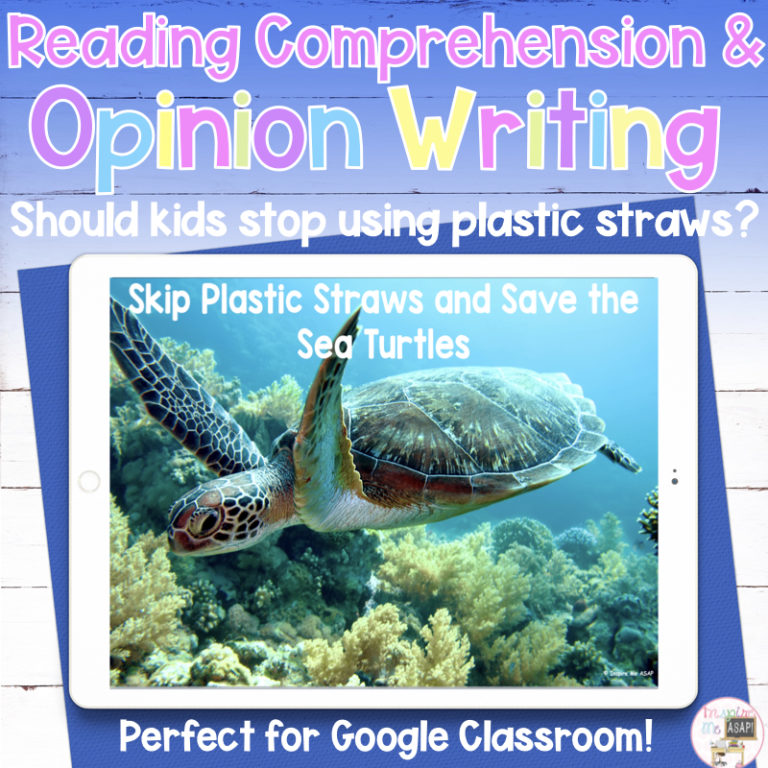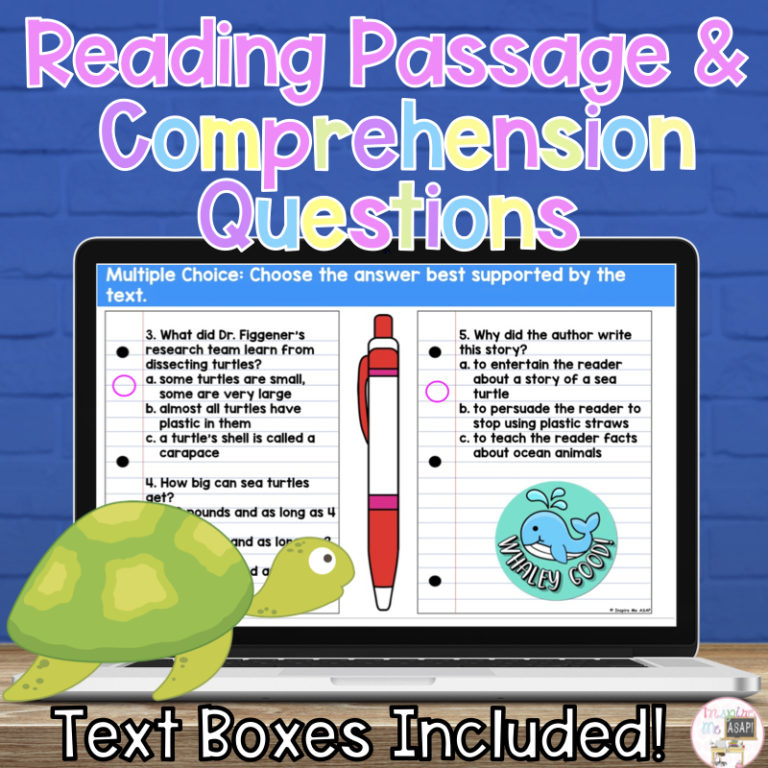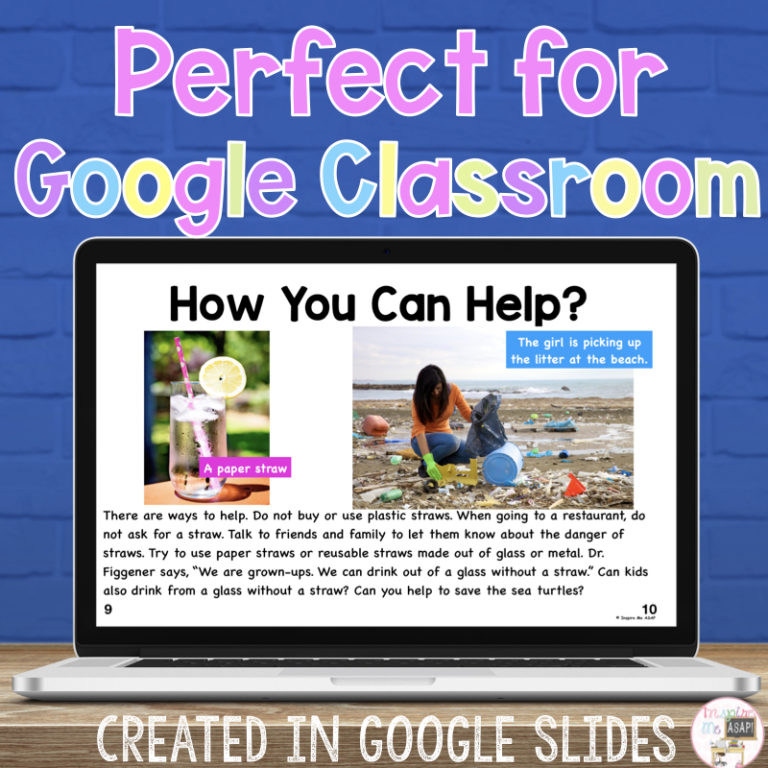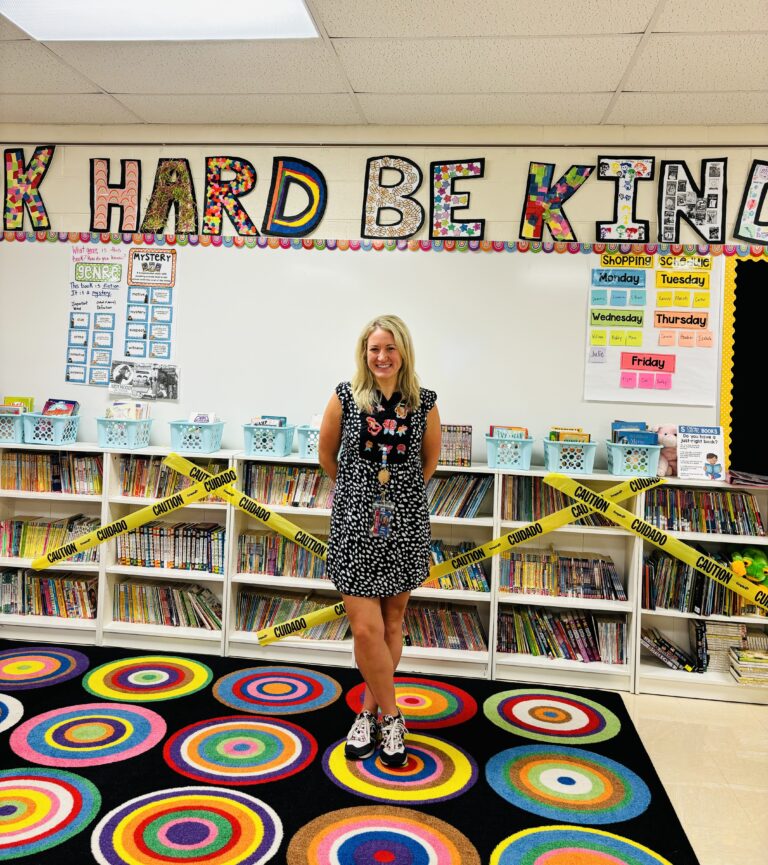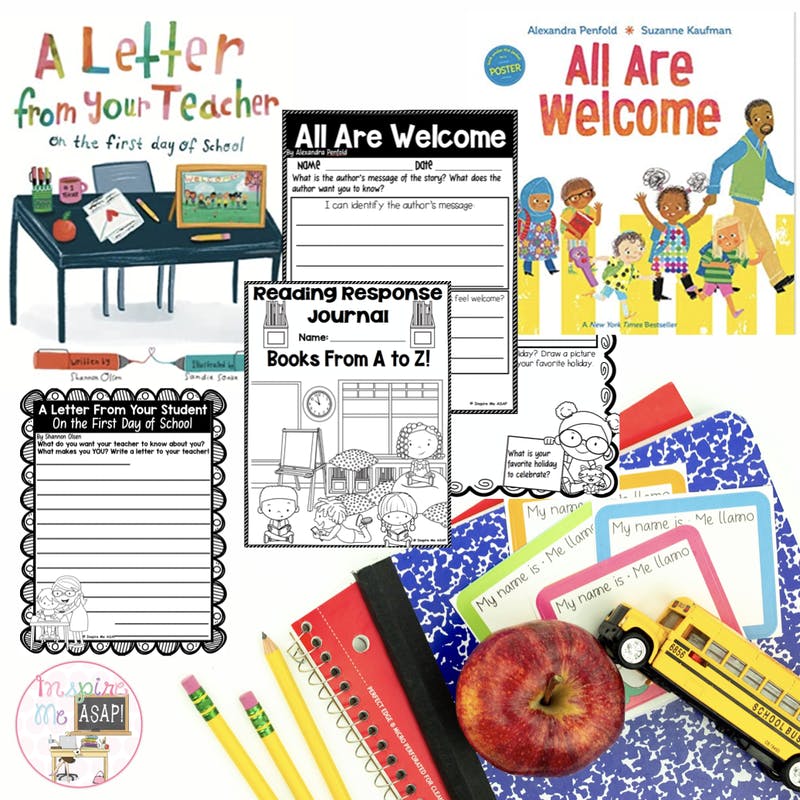
Why Teach Author’s Purpose Anyway?
Introduction to Author’s Purpose Lesson:
Students love being reading detectives and searching for clues! So, I incorporated props and a mystery box so that these lessons will engage students right away!
Before teaching this lesson, I gathered a mystery box and made a simple sign, a couple of food containers or boxes, several books from various genres and purposes that follow the same theme (apples). You will also need to create the anchor chart. I chose an apple/apple pie theme, but you could adapt this to any topic!
If you are teaching virtually, you can easily find books on Raz Kids, Epic!, or another reading site and show the covers and pages from there. Easy-peasy!
Before we continue, would you rather see the video lesson?
I first engage students by showing the “mystery box” and telling students the objective for the first activity:
“Inside this mystery box, I have a bunch of different objects, and all of these objects have something in common. Do you know what your job is? Your job is to see if you can figure out what all of these objects have in common.”
I then reveal an object one by one. Eventually, once all the clues are shown, they are the ingredients to make apple pie. This ties into our lesson of the author’s purpose. I then say, “You’re probably wondering what on earth does apple pie have to do with our reading lesson today! Well, boys and girls, I am very excited to teach you about today’s reading lesson about author’s purpose, which is as easy as pie!”
Next, we read through the anchor chart together and discuss each author’s purpose, pointing out the characteristics.

Then, we examined the food boxes and a variety of books to identify the purpose of each. I made sure to model my thought process as I went through each type of text. What clues did I notice? How did it make me feel? Did I see facts or a table of contents?
Next, it is the student’s turn! At this point in the lesson, I have students pick books to read independently. While they read, they can determine the author’s purpose, write it on a sticky note, and place it on the book’s cover to share later.
Author’s Purpose Lesson for Earth Day
This leads me to my second lesson! This author’s purpose lesson can be used during your whole group lesson or guided reading.
This is an example of how I would teach students to find the author’s purpose with a specific text. I would teach this lesson after I had introduced it with the first lesson in this post.
For this activity, I read Not for me, please! I choose to act green by Maria Godsly around the time of Earth Day. You could choose any book for this lesson using the same strategies, though!
Check out the video lesson here:
In this activity, I walk students through my thinking process and model how to look for clues about WHY the author wrote this book!
First, I engage students by showing them the litter I found while walking my dog Max. I asked students if they also find garbage when they go on walks.
I remind students of the three main reasons that authors write. I say Author’s write to persuade, inform, and entertain us. Authors write to persuade us to think about or do something. Authors write to give us information and teach us facts. Authors write to entertain us.

Next, I introduced the book Not for me, please! I choose to act green, by Maria Godsly.
I model making connections by sharing that this book is about a boy who found lots of litter on his walk, and it reminded me of when I saw all that garbage when I was out walking Max!
Then, I modeled my thought process and emphasized the question, “Why did the author MAINLY write this book?” I discovered that the main character changed his actions. So, the author’s purpose was to PERSUADE the reader to do something. I marked several examples of text evidence throughout the book that led me to this conclusion and sharing my thinking with students.

As we were reading, we discovered that the author’s main message was to be a part of the solution, not the problem. The author tried to change our behavior, so the author’s purpose for writing the book was to persuade!
At the end of the lesson, I ask students to think about a book they are reading at the moment and ask themselves: why did the author write this book? And how do they know?

Looking for more?
If you liked these lessons, you will love to extend them with my Opinion Writing for Google Slides resource! Not only do students get to read a nonfiction passage about saving sea turtles by skipping the use of plastic straws, but they will also have a structured opportunity to write about their opinions. This no-prep, easy-to-use, and paperless resource is a perfect activity to add to your lesson plans this year!
My printable Sea Turtle Reading Passage and Opinion Writing resource is also easy to implement and engaging for students. It includes a nonfiction passage, comprehension questions, slides to project, rubrics, checklists, writing paper, and a bulletin board set to display!
What are your favorite ways to teach your students about finding the author’s purpose of a text?

